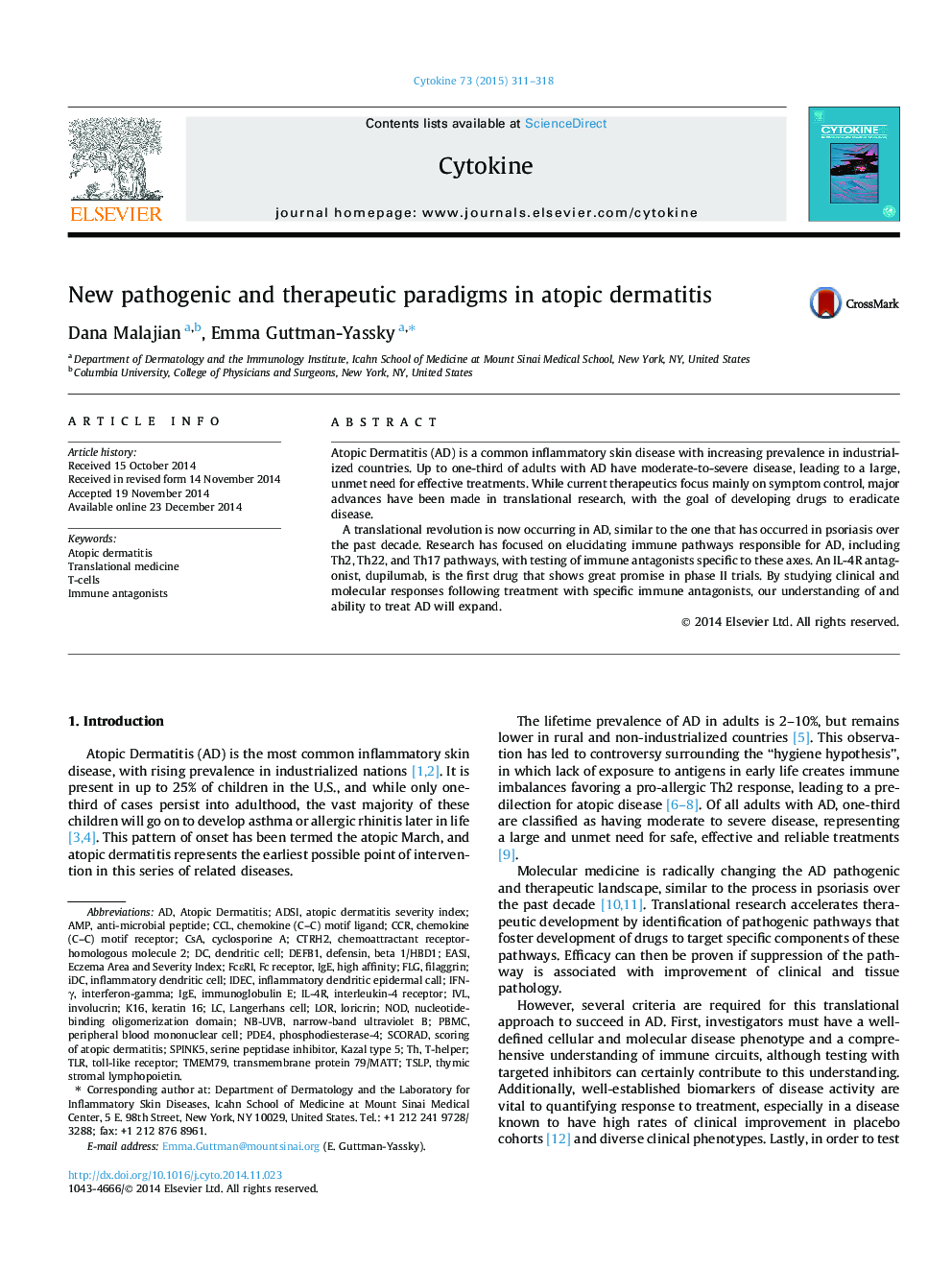| کد مقاله | کد نشریه | سال انتشار | مقاله انگلیسی | نسخه تمام متن |
|---|---|---|---|---|
| 5897016 | 1155250 | 2015 | 8 صفحه PDF | دانلود رایگان |
- Atopic Dermatitis (AD) is an increasingly prevalent inflammatory skin disease.
- Atopic dermatitis is a Th2- and Th22-polarized disease.
- There is a large, unmet need for effective therapeutics for AD.
- Translational research is leading pathogenic and therapeutic transformations in AD.
- Targeted immune antagonists show promise in ameliorating the disease in severe AD.
Atopic Dermatitis (AD) is a common inflammatory skin disease with increasing prevalence in industrialized countries. Up to one-third of adults with AD have moderate-to-severe disease, leading to a large, unmet need for effective treatments. While current therapeutics focus mainly on symptom control, major advances have been made in translational research, with the goal of developing drugs to eradicate disease.A translational revolution is now occurring in AD, similar to the one that has occurred in psoriasis over the past decade. Research has focused on elucidating immune pathways responsible for AD, including Th2, Th22, and Th17 pathways, with testing of immune antagonists specific to these axes. An IL-4R antagonist, dupilumab, is the first drug that shows great promise in phase II trials. By studying clinical and molecular responses following treatment with specific immune antagonists, our understanding of and ability to treat AD will expand.
Journal: Cytokine - Volume 73, Issue 2, June 2015, Pages 311-318
